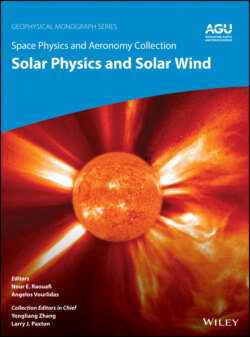Читать книгу Space Physics and Aeronomy, Solar Physics and Solar Wind - Группа авторов - Страница 28
1.7. OUTSTANDING QUESTIONS AND FUTURE PROSPECTS
ОглавлениеWe have decades of in situ measurements of the solar wind plasma, composition, and magnetic field within 1 AU, and we have decades of remote imaging and spectroscopy of the solar corona and young solar wind. NASA’s Parker Solar Probe and ESA’s Solar Orbiter missions provide an amazing opportunity to finally unite these disparate data sets and make a direct connection between the remotely observed corona and the “ground truth” in situ solar wind observations.
These missions will enable highly detailed studies of the mysterious solar wind heating. Not only will these provide new constraints on kinetic models of solar wind ions and elections and their interaction with plasma waves, but also direction comparison of the data with kinetic model results will be possible. Additionally, because together Solar Orbiter and the Parker Solar Probe will cover such a wide range of solar distances, it will be possible to study (a) the radial evolution of plasma turbulence in the expanding solar wind, (b) temperature anisotropy evolution for different particle species, and (c) to distinguish whether power‐law suprathermal tails are formed due to local turbulent processes in the solar wind or have their origin in the solar corona. Similarly, we will be able to investigate the nature of the formation of in situ mesoscale structures, weighing the importance of turbulent processing or magnetic reconnection that occurs during transit against time‐dynamic magnetic reconnection in the corona or stationary coronal streamer substructure.
Despite the many unanswered questions surrounding the formation and propagation of the solar wind, it is obvious that heliophysics is poised on the threshold of an exciting era of discovery.
